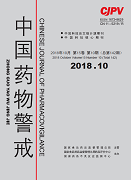|
|
Acute Hepatotoxicity of Aflatoxin B1 in Male Fischer 344 Rats
ZHANG Fan, LI Mei, SUN Hua
2018, 15(10):
587-594.
Objective To investigate the acute hepatotoxicity of aflatoxin B1 with different dosage and different times of administration in male Fischer 344 rats. Methods Fischer 344 rats were given AFB1 0.5, 1.0, 2.0 mg·kg-1 once daily for 3 days. 24 hours after each oral administration, blood was collected from venous plexus of eyes and serum was prepared. After final administration, animals were observed for one week and then all of the animals were fasted 16 h and treated to collect livers and blood, record body weights and wet weights of liver, spleen and kidney for calculating the organ indexes. The levels of serum ALT, AST, LDH, ALP, GGT, T.Bili, D.Bili were measured by automatic biochemical analyzer, and liver lobes were taken for pathological examination. Results Fischer 344 rats were given AFB1 0.5 ,1.0, 2.0 mg·kg-1 for 3 days, then the serum biochemical indicators were increased dosage and time dependently. Survival rats presented the phenomenon of separation of bile and transaminase, which indicated serious liver damage. The function of liver was not obviously improved after ceasing administration. During the experiment, the body weights of rats were decreased dosage dependently. After twice administration, there was death in high dosage. Finally, the liver indexes of survival rats in medium and high dosage group were decreased, and these rats in high dosage group were with renal edema and spleen atrophy. The Results of HE staining showed that there were inflammation and necrotic lesions in the liver of each group of AFB1 animals. Conclusion After oral administration of AFB1 0.5, 1.0, 2.0 mg·kg-1, Fischer 344 rats could display significant hepatotoxicity, which was obviously dosage and time dependent. And high dosage of AFB1 also presented toxicity in other organs. The research Results could provide reference for the study of toxicity of AFB1, especially acute toxicity.
References |
Related Articles |
Metrics
|
